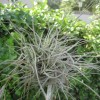 Epiphytes are “air” plants that survive on moisture and nutrients in the atmosphere. Several epiphytic plants, like Spanish moss, ball moss, and lichen, are common to the Florida landscape and southeast United States. People unfamiliar with epiphytes sometimes worry that they may cause injuries to the plants they perch in. Epiphytes do attach themselves to plants, but they do not harm the plants, unlike mistletoe, a plant parasite. Without soil as a source of nutrients, epiphytic plants have evolved the capacity to obtain minerals dissolved in water that flows across leaves and down branches. This 3-page fact sheet was written by Joe Sewards and Sydney Park Brown, and published by the UF Department of Environmental Horticulture, September 2013.
Epiphytes are “air” plants that survive on moisture and nutrients in the atmosphere. Several epiphytic plants, like Spanish moss, ball moss, and lichen, are common to the Florida landscape and southeast United States. People unfamiliar with epiphytes sometimes worry that they may cause injuries to the plants they perch in. Epiphytes do attach themselves to plants, but they do not harm the plants, unlike mistletoe, a plant parasite. Without soil as a source of nutrients, epiphytic plants have evolved the capacity to obtain minerals dissolved in water that flows across leaves and down branches. This 3-page fact sheet was written by Joe Sewards and Sydney Park Brown, and published by the UF Department of Environmental Horticulture, September 2013.
http://edis.ifas.ufl.edu/ep485
Category: Lawn & Garden
Home Gardening Food Safety: Washing the Fruits (and Vegetables) of Your Labor Properly
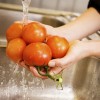 Having a home garden has become popular recently. It is a great way to enjoy fresh fruits and vegetables—foods that are an important part of a healthy diet. However, just because you have your own garden and control how it is treated does not make the fruits and vegetables you grow safer than those you buy in the store. To reduce the chance of getting sick from foodborne illnesses, you must wash the fruits and vegetables you grow before eating them raw or cooked. This publication helps you learn the proper way to clean your fruits and vegetables so you can enjoy them safely. This 4-page fact sheet was written by Eshani Persaud, Amy Simonne, and Karla P. Shelnutt, and published by the UF Department of Family Youth and Community Sciences, November 2013.
Having a home garden has become popular recently. It is a great way to enjoy fresh fruits and vegetables—foods that are an important part of a healthy diet. However, just because you have your own garden and control how it is treated does not make the fruits and vegetables you grow safer than those you buy in the store. To reduce the chance of getting sick from foodborne illnesses, you must wash the fruits and vegetables you grow before eating them raw or cooked. This publication helps you learn the proper way to clean your fruits and vegetables so you can enjoy them safely. This 4-page fact sheet was written by Eshani Persaud, Amy Simonne, and Karla P. Shelnutt, and published by the UF Department of Family Youth and Community Sciences, November 2013.
http://edis.ifas.ufl.edu/fy1401
Washingtonia robusta: Mexican Fan Palm
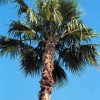 The Mexican fan palm is a fast-growing species that can reach heights of 70 to 100 feet, making it too tall for typical residential landscapes. It is native to northern Mexico but grows well in Florida, being hardy down to about 20°F or USDA hardiness zone 9A. Mexican fan palms grow well in a wide range of soils in Florida, but do require good drainage. Though considered a desert palm, it is native to areas having permanent surface or subsurface water and thus is not as drought tolerant as might be expected. This 5-page fact sheet was written by Timothy K. Broschat, and published by the UF Department of Environmental Horticulture, February 2013.
The Mexican fan palm is a fast-growing species that can reach heights of 70 to 100 feet, making it too tall for typical residential landscapes. It is native to northern Mexico but grows well in Florida, being hardy down to about 20°F or USDA hardiness zone 9A. Mexican fan palms grow well in a wide range of soils in Florida, but do require good drainage. Though considered a desert palm, it is native to areas having permanent surface or subsurface water and thus is not as drought tolerant as might be expected. This 5-page fact sheet was written by Timothy K. Broschat, and published by the UF Department of Environmental Horticulture, February 2013.
http://edis.ifas.ufl.edu/st670
Syagrus romanzoffiana: Queen Palm
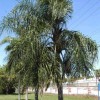 The queen palm is a popular feather-leaved palm with graceful arching leaves. It is one of the hardiest of the tropical-looking palms, being suitable for planting in USDA plant hardiness zone 9B (>25°F). Queen palms are considered to be moderately tolerant of salt spray. This 5-page fact sheet was written by Timothy K. Broschat, and published by the UF Department of Environmental Horticulture, October 2013.
The queen palm is a popular feather-leaved palm with graceful arching leaves. It is one of the hardiest of the tropical-looking palms, being suitable for planting in USDA plant hardiness zone 9B (>25°F). Queen palms are considered to be moderately tolerant of salt spray. This 5-page fact sheet was written by Timothy K. Broschat, and published by the UF Department of Environmental Horticulture, October 2013.
http://edis.ifas.ufl.edu/st609
Florida Edible Garden Plants: Hops (Humulus lupulus)
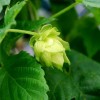 Hops are perennial, herbaceous climbing plants commonly cultivated for their strobiles or cones (Figure 1). The cones are often used for flavoring and aroma in food, tea, and beer (Burgess 1964). Hops can make a unique addition to a home garden or landscape. It grows rapidly in the early spring to late summer. Plants reach a mature height of 18–25 feet in one year and produce cones from mid-summer to early fall. This 2-page fact sheet was written by Brian J. Pearson, and published by the UF Department of Environmental Horticulture, October 2013.
Hops are perennial, herbaceous climbing plants commonly cultivated for their strobiles or cones (Figure 1). The cones are often used for flavoring and aroma in food, tea, and beer (Burgess 1964). Hops can make a unique addition to a home garden or landscape. It grows rapidly in the early spring to late summer. Plants reach a mature height of 18–25 feet in one year and produce cones from mid-summer to early fall. This 2-page fact sheet was written by Brian J. Pearson, and published by the UF Department of Environmental Horticulture, October 2013.
http://edis.ifas.ufl.edu/ep488
Smartirrigation Apps: Urban Turf
 We developed an app called Smartirrigation Turf to provide an easy-to-use mobile tool that delivers information to improve irrigation scheduling for urban turf. Using the app instead of a set time-based schedule for irrigation, homeowners and others can provide irrigation amounts to turf that more closely match water needs. This version of the app is applicable in Florida and Georgia and is available to download in the Apple App Store and Google Play Store. This 5-page fact sheet was written by K. W. Migliaccio, J. H. Debastiani Andreis, C. Fraisse, K. T. Morgan, and G. Vellidis, and published by the UF Department of Agricultural and Biological Engineering, October 2013.
We developed an app called Smartirrigation Turf to provide an easy-to-use mobile tool that delivers information to improve irrigation scheduling for urban turf. Using the app instead of a set time-based schedule for irrigation, homeowners and others can provide irrigation amounts to turf that more closely match water needs. This version of the app is applicable in Florida and Georgia and is available to download in the Apple App Store and Google Play Store. This 5-page fact sheet was written by K. W. Migliaccio, J. H. Debastiani Andreis, C. Fraisse, K. T. Morgan, and G. Vellidis, and published by the UF Department of Agricultural and Biological Engineering, October 2013.
http://edis.ifas.ufl.edu/ae499
’Fairytale Princess’ and ’Red Hot’: Red Lance-leaved Caladium Cultivars
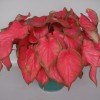 Caladiums are valued in landscapes and containers for their colorful and variable-shaped leaves. Two types of caladium cultivars exist in commercial production: fancy- and lance-leaved. ‘Florida Sweetheart’ is the most popular lance-leaved commercial cultivar of all colors. It produces wide lance leaves with a rosy color and relatively large tubers. ‘Florida Red Ruffles’ is the most popular red, lance-leaved commercial cultivar among caladium growers, greenhouse growers, and nurseries. It has excellent sunburn tolerance. Both cultivars were introduced by the University of Florida (UF) caladium breeding program. This 9-page fact sheet was written by Zhanao Deng, and published by the UF Department of Environmental Horticulture, August 2013.
Caladiums are valued in landscapes and containers for their colorful and variable-shaped leaves. Two types of caladium cultivars exist in commercial production: fancy- and lance-leaved. ‘Florida Sweetheart’ is the most popular lance-leaved commercial cultivar of all colors. It produces wide lance leaves with a rosy color and relatively large tubers. ‘Florida Red Ruffles’ is the most popular red, lance-leaved commercial cultivar among caladium growers, greenhouse growers, and nurseries. It has excellent sunburn tolerance. Both cultivars were introduced by the University of Florida (UF) caladium breeding program. This 9-page fact sheet was written by Zhanao Deng, and published by the UF Department of Environmental Horticulture, August 2013.
http://edis.ifas.ufl.edu/ep481
New Gerbera Daisy Varieties for Large Containers and Flower Gardens
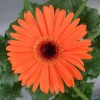 Gerbera daisy is one of the most popular flowers in the United States. Recently, interest has increased in growing gerberas in large containers for indoor or outdoor use. ‘Funtastic™ Tangerine Eye’ and ‘Funtastic™ Golden Eye’ have been selected and tested specifically for use in large containers. These cultivars produce large, powdery mildew-resistant plants and large, attractive flowers in orange-red or yellow-orange that complement the existing Funtastic™ series of gerbera cultivars. This 8-page fact sheet was written by Zhanao Deng, and published by the UF Department of Environmental Horticulture, September 2013.
Gerbera daisy is one of the most popular flowers in the United States. Recently, interest has increased in growing gerberas in large containers for indoor or outdoor use. ‘Funtastic™ Tangerine Eye’ and ‘Funtastic™ Golden Eye’ have been selected and tested specifically for use in large containers. These cultivars produce large, powdery mildew-resistant plants and large, attractive flowers in orange-red or yellow-orange that complement the existing Funtastic™ series of gerbera cultivars. This 8-page fact sheet was written by Zhanao Deng, and published by the UF Department of Environmental Horticulture, September 2013.
http://edis.ifas.ufl.edu/ep482
Southern black widow Latrodectus mactans (Fabricius) (Arachnida: Araneae: Theridiidae)
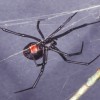 The Southern black widow spider, Latrodectus mactans (Fabricius), is a venomous spider found throughout the southeastern United States. Widow spiders received their name from the belief that they would kill and consume their mate following copulation. However, the practice was mainly observed in laboratory settings under crowded conditions. It is believed that sexual cannibalism within the widow species in natural settings is more associated with the male’s physical inability to escape rather than the female’s interest in consuming him. This 6-page fact sheet was written by Amanda Eiden and Phil E. Kaufman, and published by the UF Department of Entomology and Nematology, May 2013.
The Southern black widow spider, Latrodectus mactans (Fabricius), is a venomous spider found throughout the southeastern United States. Widow spiders received their name from the belief that they would kill and consume their mate following copulation. However, the practice was mainly observed in laboratory settings under crowded conditions. It is believed that sexual cannibalism within the widow species in natural settings is more associated with the male’s physical inability to escape rather than the female’s interest in consuming him. This 6-page fact sheet was written by Amanda Eiden and Phil E. Kaufman, and published by the UF Department of Entomology and Nematology, May 2013.
http://edis.ifas.ufl.edu/in1000
Phoenix canariensis: Canary Island Date Palm
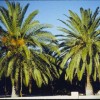 The Canary Island date palm is native to the Canary Islands. Although it can reach heights of 40–50 feet, it is slow growing and requires many years to attain that height. It has 8- to 15-foot-long rigid leaves that contain up to 200 V-shaped leaflets, the basal ones of which are modified into long, sharp spines. Leaves are not self-cleaning and must be manually removed when dead, but the leaf bases eventually rot off, leaving an attractive diamond-shaped pattern of leaf scars on the 2- to 3-foot-diameter trunk. On older specimens, the basal foot or so of the trunk typically is covered with short root initials. This 6-page fact sheet was written by T. K. Broschat, and published by the UF Department of Environmental Horticulture, August 2013.
The Canary Island date palm is native to the Canary Islands. Although it can reach heights of 40–50 feet, it is slow growing and requires many years to attain that height. It has 8- to 15-foot-long rigid leaves that contain up to 200 V-shaped leaflets, the basal ones of which are modified into long, sharp spines. Leaves are not self-cleaning and must be manually removed when dead, but the leaf bases eventually rot off, leaving an attractive diamond-shaped pattern of leaf scars on the 2- to 3-foot-diameter trunk. On older specimens, the basal foot or so of the trunk typically is covered with short root initials. This 6-page fact sheet was written by T. K. Broschat, and published by the UF Department of Environmental Horticulture, August 2013.
http://edis.ifas.ufl.edu/st439
Soil Characteristics and Management Practices for Urban Residential Landscapes
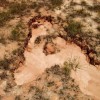 Newly constructed urban residential landscape soils sampled within Central Florida are dominated by large sand particles and possess low soil moisture retention. Therefore, irrigation and fertilizer applications should be managed to match site conditions and prevent overapplication of water and nutrient leaching. Sampled soils in newly developed urban residential communities were found to be highly compacted and likely to inhibit plant establishment and growth. This 3-page fact sheet was written by Brian J. Pearson, and published by the UF Department of Environmental Horticulture, July 2013.
Newly constructed urban residential landscape soils sampled within Central Florida are dominated by large sand particles and possess low soil moisture retention. Therefore, irrigation and fertilizer applications should be managed to match site conditions and prevent overapplication of water and nutrient leaching. Sampled soils in newly developed urban residential communities were found to be highly compacted and likely to inhibit plant establishment and growth. This 3-page fact sheet was written by Brian J. Pearson, and published by the UF Department of Environmental Horticulture, July 2013.
http://edis.ifas.ufl.edu/ep479
Silicon Effects on Resistance of St. Augustinegrass to Southern Chinch Bugs and Plant Disease
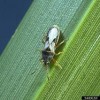 Silicon (Si) is the second most common element on earth, but it is not considered an essential element for plant growth. However, a growing body of evidence has shown that Si can enhance plant resistance to insect pests. This 5-page fact sheet reports the results of a study to determine if silicon applications to St. Augustinegrass varieties increase the silicon in the plants and how this increased silicon affects development and survival of southern chinch bugs as well as development of plant diseases. Written by Alan L. Wright, Ron Cherry, Huangjun Lu, and Pamela Roberts, and published by the UF Department of Soil and Water Science, September 2013.
Silicon (Si) is the second most common element on earth, but it is not considered an essential element for plant growth. However, a growing body of evidence has shown that Si can enhance plant resistance to insect pests. This 5-page fact sheet reports the results of a study to determine if silicon applications to St. Augustinegrass varieties increase the silicon in the plants and how this increased silicon affects development and survival of southern chinch bugs as well as development of plant diseases. Written by Alan L. Wright, Ron Cherry, Huangjun Lu, and Pamela Roberts, and published by the UF Department of Soil and Water Science, September 2013.
http://edis.ifas.ufl.edu/ss589
Armillaria Root Rot (Also known as Mushroom Root Rot, Shoestring Root Rot, Honey Mushroom Rot)
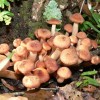 Armillaria root rot is a disease that decays the root system of many common trees and shrubs. It is caused by several species of Armillaria, fungi that can be recognized by the clusters of yellow to honey-colored mushrooms that emerge during moist conditions. The disease is often lethal, and infected trees may have wilting branches, branch dieback, and stunted growth. Infected trees and shrubs should be removed and replaced with resistant species. This 4-page fact sheet was written by Laura Sanagorski, Aaron Trulock, and Jason Smith, and published by the UF Department of Environmental Horticulture, July 2013.
Armillaria root rot is a disease that decays the root system of many common trees and shrubs. It is caused by several species of Armillaria, fungi that can be recognized by the clusters of yellow to honey-colored mushrooms that emerge during moist conditions. The disease is often lethal, and infected trees may have wilting branches, branch dieback, and stunted growth. Infected trees and shrubs should be removed and replaced with resistant species. This 4-page fact sheet was written by Laura Sanagorski, Aaron Trulock, and Jason Smith, and published by the UF Department of Environmental Horticulture, July 2013.
http://edis.ifas.ufl.edu/ep478
Natural Enemies of Rugose Spiraling Whitefly, Aleurodicus rugioperculatus Martin (Insecta: Hemiptera: Aleyrodidae) in the South Florida Landscape
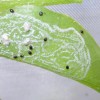 Rugose spiraling whitefly was first observed in south Florida in 2009. It has been found in 17 counties in south and central Florida. This whitefly has been reported on more than 60 plant species, which include gumbo limbo, coconut, black olive, avocado, Calophyllum spp., and giant white bird of paradise. This 6-page fact sheet describes the predators and parasitoids found feeding on this whitefly in the south Florida landscape. Written by Siavash Taravati, Catharine Mannion and Holly Glenn, and published by the UF Department of Entomology and Nematology, August 2013.
Rugose spiraling whitefly was first observed in south Florida in 2009. It has been found in 17 counties in south and central Florida. This whitefly has been reported on more than 60 plant species, which include gumbo limbo, coconut, black olive, avocado, Calophyllum spp., and giant white bird of paradise. This 6-page fact sheet describes the predators and parasitoids found feeding on this whitefly in the south Florida landscape. Written by Siavash Taravati, Catharine Mannion and Holly Glenn, and published by the UF Department of Entomology and Nematology, August 2013.
http://edis.ifas.ufl.edu/in1004
How To Buy Pest Control Services
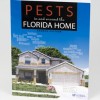 Pest control, like any kind of business, is a joint venture between the company and the customer. As with many businesses, customers may have difficulty judging whether they have received the most skilled efforts for their money. This 4-page fact sheet should help customers objectively look at the service they are buying to determine its merit. Written by P. G. Koehler, and published by the UF Department of Entomology and Nematology, July 2013. This fact sheet updates a chapter of SP134: Pests in and around the Florida Home, which is available from the IFAS Extension Bookstore.
Pest control, like any kind of business, is a joint venture between the company and the customer. As with many businesses, customers may have difficulty judging whether they have received the most skilled efforts for their money. This 4-page fact sheet should help customers objectively look at the service they are buying to determine its merit. Written by P. G. Koehler, and published by the UF Department of Entomology and Nematology, July 2013. This fact sheet updates a chapter of SP134: Pests in and around the Florida Home, which is available from the IFAS Extension Bookstore.
http://edis.ifas.ufl.edu/mg237
Weed Management Guide for Florida Lawns
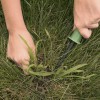 Weeds can be defined as unwanted plants or plants growing out of place. Proper identification and some understanding of how and why weeds are present in a lawn are important when selecting the best control strategy. Knowing whether or not weeds were previously present in a particular area also helps homeowners prepare control measures in the future. Weed control should be a carefully planned and coordinated program. This 8-page fact sheet was written by J.Bryan Unruh, Ramon G. Leon, Barry J. Brecke, and Laurie E. Trenholm, and published by the UF Department of Environmental Horticulture, July 2013.
Weeds can be defined as unwanted plants or plants growing out of place. Proper identification and some understanding of how and why weeds are present in a lawn are important when selecting the best control strategy. Knowing whether or not weeds were previously present in a particular area also helps homeowners prepare control measures in the future. Weed control should be a carefully planned and coordinated program. This 8-page fact sheet was written by J.Bryan Unruh, Ramon G. Leon, Barry J. Brecke, and Laurie E. Trenholm, and published by the UF Department of Environmental Horticulture, July 2013.
http://edis.ifas.ufl.edu/ep141
Sabal palmetto: Sabal or Cabbage Palm
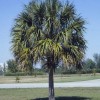 The sabal palm, or cabbage palm, is native to Florida and coastal regions of North and South Carolina and Georgia, and is the state tree of both South Carolina and Florida. The name “cabbage palm” comes from its edible immature leaves, or “heart,” which has a cabbage-like flavor. This 5-page fact sheet was written by T. K. Broschat, and published by the UF Department of Environmental Horticulture, July 2013.
The sabal palm, or cabbage palm, is native to Florida and coastal regions of North and South Carolina and Georgia, and is the state tree of both South Carolina and Florida. The name “cabbage palm” comes from its edible immature leaves, or “heart,” which has a cabbage-like flavor. This 5-page fact sheet was written by T. K. Broschat, and published by the UF Department of Environmental Horticulture, July 2013.
http://edis.ifas.ufl.edu/st575
Florida Foliage House Plant Care: ZZ Plant
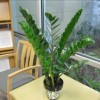 ZZ plant is enjoyed for its unique appearance, its ability to grow under low light conditions, and its tolerance to drought. ZZ’s naturally glossy leaves are so shiny that the plant appears to have been polished. This 2-page fact sheet was written by R. J. Henny and J. Chen, and published by the UF Department of Environmental Horticulture, July 2013.
ZZ plant is enjoyed for its unique appearance, its ability to grow under low light conditions, and its tolerance to drought. ZZ’s naturally glossy leaves are so shiny that the plant appears to have been polished. This 2-page fact sheet was written by R. J. Henny and J. Chen, and published by the UF Department of Environmental Horticulture, July 2013.
http://edis.ifas.ufl.edu/ep480
Florida Foliage House Plant Care: Spathiphyllum
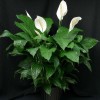 Most Spathiphyllum are seen in flower when at market. The attractive white blooms, called spathes, are long lasting. With proper plant care, Spathiphyllum may produce blooms year after year. Spathiphyllum is a very attractive house plant even when not in bloom and adapts well to home and patio environments. This 2-page fact sheet was written by R. J. Henny and J. Chen, and published by the UF Department of Environmental Horticulture, June 2013.
Most Spathiphyllum are seen in flower when at market. The attractive white blooms, called spathes, are long lasting. With proper plant care, Spathiphyllum may produce blooms year after year. Spathiphyllum is a very attractive house plant even when not in bloom and adapts well to home and patio environments. This 2-page fact sheet was written by R. J. Henny and J. Chen, and published by the UF Department of Environmental Horticulture, June 2013.
http://edis.ifas.ufl.edu/ep477
Granulate cutworm, Feltia subterranea (Fabricius) (Insecta: Lepidoptera: Noctuidae)
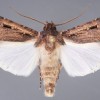 The granulate cutworm, Feltia subterranea (Fabricius) is the most commonly occurring cutworm in Florida, though it is rarely numerous enough to be a major pest. It is nocturnal through most of its life, and lacks distinctive features in the larval and adult stage, so it often is overlooked, and its activities and damage are not fully appreciated. This 4-page fact sheet was written by John L. Capinera, and published by the UF Department of Entomology and Nematology, May 2013.
The granulate cutworm, Feltia subterranea (Fabricius) is the most commonly occurring cutworm in Florida, though it is rarely numerous enough to be a major pest. It is nocturnal through most of its life, and lacks distinctive features in the larval and adult stage, so it often is overlooked, and its activities and damage are not fully appreciated. This 4-page fact sheet was written by John L. Capinera, and published by the UF Department of Entomology and Nematology, May 2013.
http://edis.ifas.ufl.edu/in997